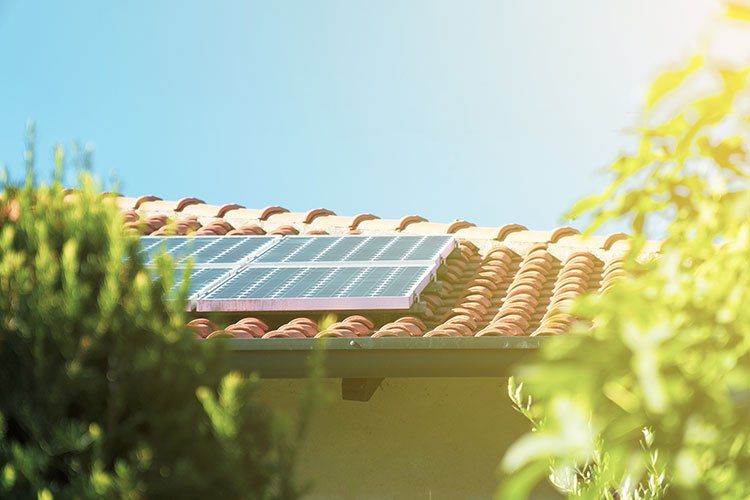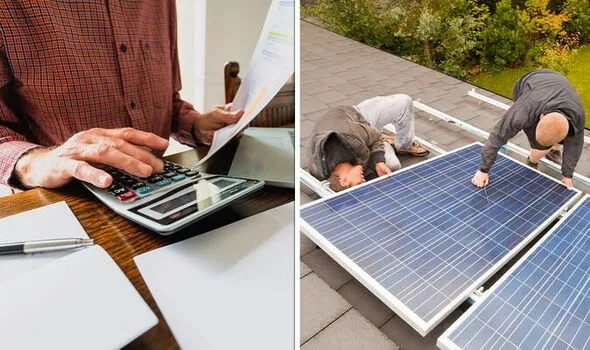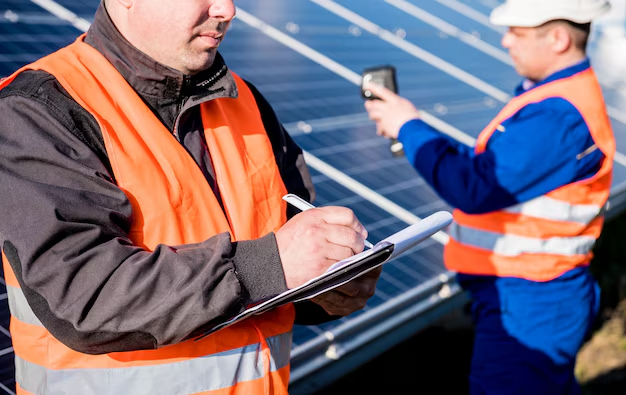There are a few ways to maximise the use and benefits you gain from solar. One of the proven methods has something to do with timing. Many Australian homes end up with higher power bills in the summer. We end up using more appliances to cool ourselves, namely with fans and air conditioners.
Let us take a look at the average costs of using these appliances:
- The hourly running cost of ducted air conditioning systems for the whole house is $2.45. Use it for three months, and you end up paying $882 for air-con alone.
- If you have a portable air conditioner, the running cost every hour is $45c. It is much less than the ducted air con, but can still cost you $162 in three months.
- Split systems are the least expensive with an hourly running cost of only 25c. Using a split-type air conditioner will add $90 to your power bills over three months.
Fans are more affordable, ranging from a little over $7 over three months to almost $4. The most inexpensive way to cool yourself is through a desk fan, which usually costs 1c per hour. Additionally, the running costs of the fans mentioned are for a single fan only. Many homes have more than one fan, and they usually turn on these fans simultaneously. The costs will certainly add up.
If you use fans or any of the appliances above for more than four hours every day, you can already imagine the shock you will get when you see your power bills.
Of course, the numbers above are purely estimates. You also have to consider your location, most especially, since the costs differ from one state to another. In South Australia, for instance, the typical three-person household would shell out over $540 for the quarterly power bills.

Compared to all the states, SA has the most expensive energy costs. The least expensive is Victoria with $297 while the others range from $337 to $384.
Therefore, looking at the costs above, if your house uses a ducted air conditioner for your entire house for three months is $882. The summer power bill can rise to $1,430. Add a ceiling fan, which costs $7.20 for over three months, and your power bill will increase to $555.20 for the rest of the summer.
Meanwhile, in Perth and the rest of Western Australia, the story is quite different. There is only one electricity retailer, which is Synergy and that makes it a little less complicated. If you are a resident here, you already know about your option between a single rate and a flexible option.
As of July 2019, the single-rate tariff in the Perth area is 103.33c per day for the supply charge and 28.82c per kWh for the electricity usage. On the other hand, flexible pricing is based on the time you use your electricity, which will affect the rates. For instance, peak electricity usage costs 54.81c per kWh and the weekday shoulder electricity usage is 28.71c per kWh. Synergy allows you to get an estimate of your last usage.
Why Install Solar Panels in Spring
You do not have to wait and see your summer bill go up. You can already enjoy the benefits of solar systems before the hot weather starts. It is why solar installation should be performed during the spring. This season is believed to be more financially beneficial. While summer is when the hot weather begins, there is no reason to wait for the next season to have solar panels up on your roof.
If you have been considering going solar, here are the top reasons why spring is the time to make the switch:
-
- You will be ready for the summer heat.The solar installation is not the same as installing a central air conditioning unit. The process is more elaborate, which is why it makes sense that you allow more time for it.
You have requirements to meet, such as:
- Complying with the Clean Energy Council Code when it comes to the installation, including that the installer should be accredited and licenced
- The installation complies with the installation and design guidelines that the Clean Energy Council has set
- Ensuring compliance with different standards, including AS/NZS 5033 and 1170.2, which are about the safety requirements for PV arrays and structural design essentials respectively.
Other guidelines involve wiring rules, lightning protection, and grid connection. Some inspections may be required, depending on your area and the size of the system.
After the installation, you are required to send a signed document to the Clean Energy Regulator, stating that you have complied with the requirements. The good news is that hiring a licenced installer will remove all these tasks since the installer will take care of them for you.
Installations during summer can take time because it is the season when many people decide to switch to solar. It can take weeks or even months before your system is installed during the peak season. Therefore, it is beneficial if you install in spring to ensure that your home is ready when summer comes.
- Wait time for solar installation is shorter.As temperatures rise, you will have a source of energy that is cost-efficient. This way, you do not have to compete with your neighbours as they start calling installers to their homes. Installers are often busiest during the summer season.
While storms and other weather changes may not be common in Western Australia, the high temperatures can be a problem. They can easily delay the installation of your solar system. Therefore, you should not wait for the summer to schedule the setting up of the PV array.
Start the process early, so you do not have to be concerned about the packed summer schedules and even the unwelcomed weather surprises.
- You do not have to spend another month overpaying your bills.You can save more if you start early. One thing that you have to know about solar is that it will not pay off right away. The process takes time, which is why you should install it now. The panels produce a good amount of energy during spring and as summer approaches. However, most Australians have lower electricity output in springtime.
Installing now will dramatically reduce your bills without waiting too long. Your home will rely on solar power as your primary source of energy. You get to offset the power bills that you spend on air conditioners, pool pumps, and others when you run them during the day when the solar power system generates peak output.
- You can save the energy you have accumulated.During spring, it is easy to see why many households do not use as much electricity as in other months. The temperatures are warm but not hot; you also do not need a heater. You have longer days when you do not need to turn on your air conditioners and even use your extra fridge for holiday cooking or summer parties.
In general, spring is the time for you to get as much power from the sun. This way, you can use it when you need it the most, which is mostly during the summer season.
- You can get the most out of the solar system during spring.Solar systems work efficiently because of light. A common misconception is that they work on heat. Spring is the best time to install solar panels, because there are plenty of sunny days during this season. At the same time, the temperatures are much lower.
It is easy to see why experts and installers recommend spring because there usually is no worry about scorching temperatures. Therefore, you can gain more power from the panels than when it is extremely hot.
- STCs decrease every year.You should not wait to have solar panels installed. The available rebate that you can get is known as the small scale technology certificates or STCs. You may know about them as a reward or incentive for homeowners with solar panels installed. They give you a rebate when you use solar energy instead of what you can get from the electric retailer.
You can think of the STC as a voucher that gives you a discount when you install your solar system. The discount that you gain will depend on your location, as well as the size of your system. Note that the rebate only applies to those who installed a system that is below 99kW.
The most common installation is 6.6kW with a 5kW inverter. If you live in Perth and you have a 6.6kW system with a 5kW inverter and you had the system installed this year, you are entitled to 109 STCs. Every STC is equivalent to $35 to $38, but you can get up to $40, although rare. In this case, the maximum rebate that you can gain is $4,360 (109 STCs x $40).
Each year, the rebate gradually decreases on the 1st of January. The equivalent number will eventually reach zero in 2032. If you delay getting solar to the next year or the year after that, the rebate you are entitled to will not be as much you would this year. Also, the date considered in determining the rebate you get is based on when you had the system installed, not when you placed the order.
- It is a good investment, especially at tax time.At this time of the year, many people are getting their tax returns ready. It is, therefore, the best time for you to invest in this type of expense for improving your home. In the years to come, it will certainly pay off.
As mentioned, your tax credit is based on when the solar system was approved for operation. You should lodge your tax return to receive an investment tax credit for the installation. Note, however, that you cannot qualify for the tax credit unless you are the owner of the solar system.
If it is the first time that you will lodge your tax return for green energy, here are the steps to follow:
-
- Complete the Solar Tax Credit form.
- Provide the full amount of your expenses on the appropriate section for renewable energy.
- Read the instructions carefully and determine the percentage for the tax return.
- Calculate your tax return using the value given above to know the total tax credit you will get back.
- When you submit your tax return to the Australian Taxation Office (ATO), you can add the number above.
As for businesses, they can get an asset write-off for the solar panel they have installed. The requirements though are slightly different for companies since they would typically install larger systems.
-
- You will be ready for the summer heat.The solar installation is not the same as installing a central air conditioning unit. The process is more elaborate, which is why it makes sense that you allow more time for it.

- You produce a lot of energy from the sun.It cannot be denied that the sun is the hottest in the summer. Spring is the close second and it is the best time for you to install a solar system. In 2017, the city of Perth experienced temperatures averaging 24.4C in spring. It was the third-warmest spring in almost 120 years. Consequently, it was a great period to generate and capture solar power.
Installing solar systems in spring will give you the results you want, along with the savings. Therefore, you will almost immediately see the return on investment.
- You get your much-deserved summer break.In the summer, you will certainly want to enjoy your time relaxing. You may not go to work for a while and just spend time with the family. You have other fun things to do, so you do not want to wait another year to accomplish them.
You cannot go on a holiday if you spend hours and hours just to research on solar and installers in the area. It can take a while for you to decide, which means you have to sit on the phone talking to Synergy and the installer. You should not wait for summer so you can be free when the season approaches.
While you can buy and go solar at any time of the year, spring is the most ideal. With all the reasons above, you should not postpone the installation until the summer or the next year. Call EasySolar today!







